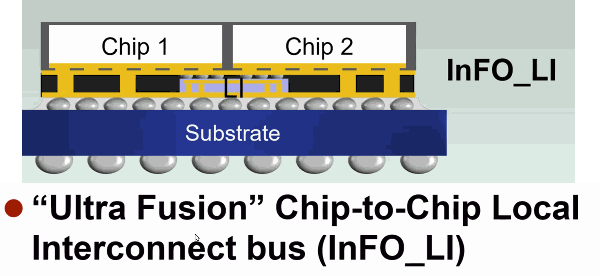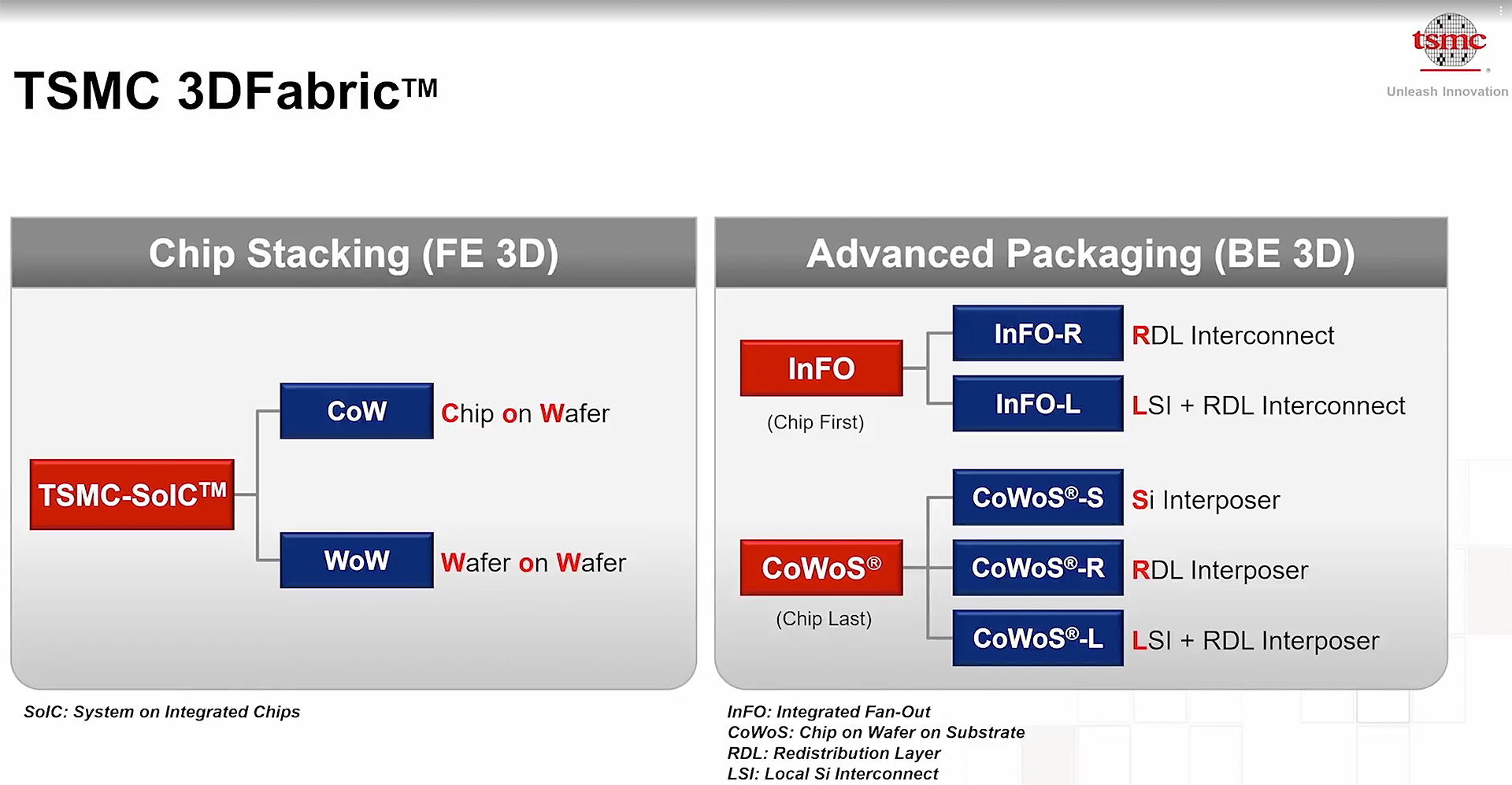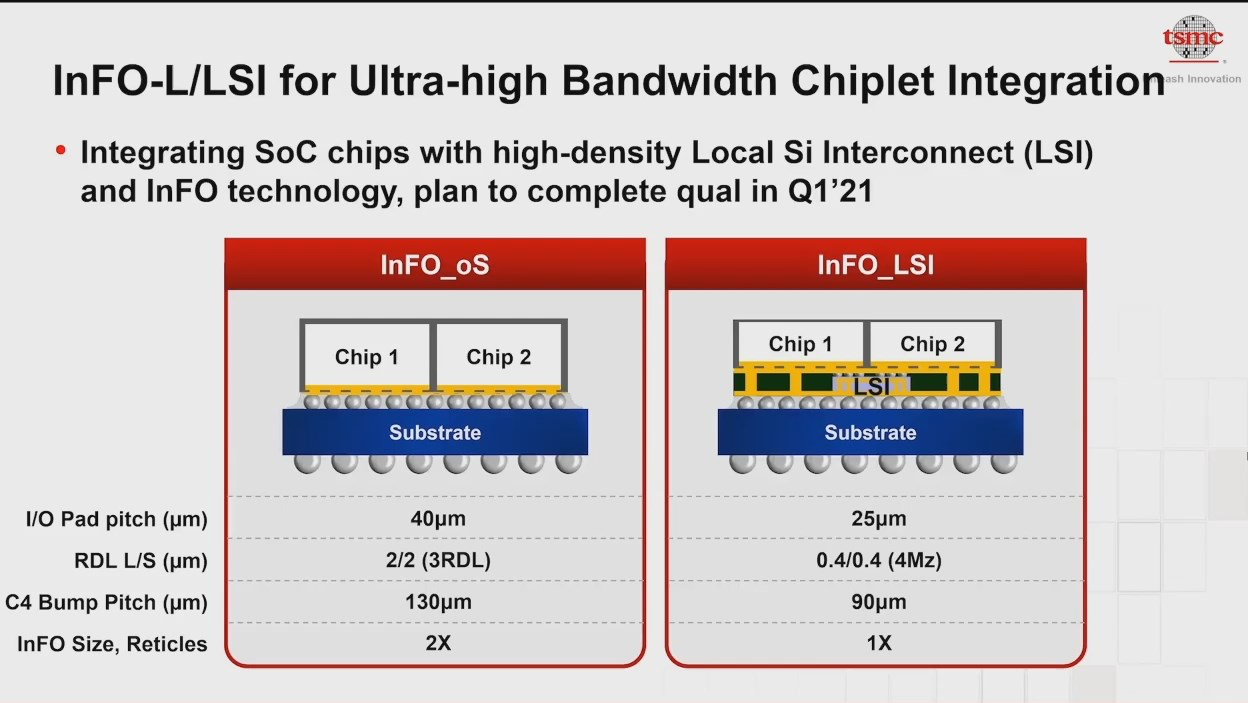TSMC Clarifies Apple's UltraFusion Chip-to-Chip Interconnect
InFO_LI, not CoWoS, says TSMC.
TSMC recently confirmed that Apple used its InFO_LI packaging method to build its M1 Ultra processor and enable its UltraFusion chip-to-chip interconnect. Apple is one of the first companies to use InFO_LI technology.
When Apple introduced its 20-core M1 Ultra processor earlier this year, it impressed observers with its UltraFusion 2.5 TB/s inter-processor interconnect and made us wonder what kind of packaging technology it used. Since Apple uses TSMC's chip production services, it was reasonable to assume that it used one of TSMC's packaging technologies too.

Back in March, a rumor suggested that Apple opted to use TSMC's CoWoS-S (chip-on-wafer-on-substrate with silicon interposer) 2.5D interposer-based packaging, which is pretty much a proven technology used by a number of companies. Apparently, this is not correct. According to a presentation demonstrated by the foundry at the International Symposium on 3D IC and Heterogeneous Integration, Apple uses Integrated Fan-Out (InFO) with local silicon interconnect (LSI) and a redistribution layer (RDL). The slide was republished by Tom Wassick, a semiconductor packaging engineering professional.
Ultimately, Apple's UltraFusion chip-to-chip interconnect uses a passive silicon bridge that connects one M1 Max to another M1 Max processor to build an M1 Ultra, but there are several ways to implement such a bridge. InFO_LI uses localized silicon interconnects beneath multiple dies instead of large and costly interposers, which is a concept that is very similar to Intel's embedded die interconnect bridge (EMIB).
By contrast, CoWoS-S uses an expensive interposer, so unless a very 'broad' interconnect is needed (which is required for multi-chiplet + HBM memory integration), InFO is a preferable technology from a cost perspective. Meanwhile, since Apple does not use HBM memory and does not need to integrate two or more dies that are larger than interposer, InFO is more than enough for M1 Ultra.
One of the reasons we thought Apple might use CoWoS-S instead of InFO_LI is because the former was ready for commercial use, whereas the latter was meant to complete qualification in Q1 2021. Apple started to ramp its M1 Pro and M1 Max in Q2 or Q3 2021, so we were not sure whether the company would use brand-new packaging technology for one of its important designs.
Get Tom's Hardware's best news and in-depth reviews, straight to your inbox.

Anton Shilov is a contributing writer at Tom’s Hardware. Over the past couple of decades, he has covered everything from CPUs and GPUs to supercomputers and from modern process technologies and latest fab tools to high-tech industry trends.

